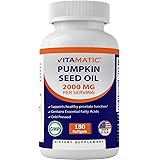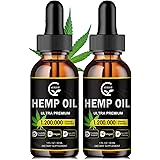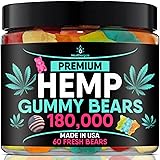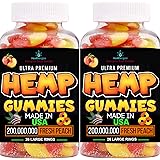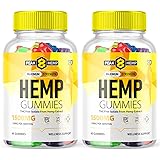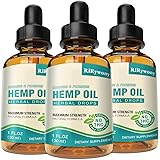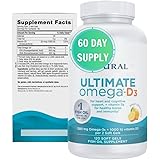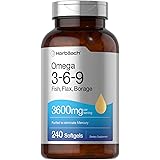The increasing interest in natural and alternative solutions for managing discomfort has brought Cannabidiol, commonly known as CBD, into the spotlight, particularly for those seeking **pain relief**. As highlighted in the accompanying video, many individuals are exploring prescription-free **CBD products** as a potential aid for various types of pain, from chronic conditions to everyday muscle soreness. This widespread curiosity is reflected in the staggering fact that one in five Americans experiences chronic pain, leading to millions of online searches for information about CBD in just a single month.
The appeal of CBD is often linked to its non-psychoactive nature, meaning it does not produce the “high” associated with its cannabis counterpart, THC. This characteristic makes it an attractive option for people who desire the therapeutic benefits of the cannabis plant without any mind-altering effects. Numerous anecdotes, like those from prominent figures such as Melissa McCarthy and former NFL player Gronk, suggest that CBD has been a game-changer for their personal pain management, underscoring its growing popularity among athletes and the general public alike.
Understanding CBD for Pain Relief: What You Need to Know
The Widespread Search for Pain Relief
A significant portion of the population is actively seeking effective strategies to manage persistent pain. It has been reported that one in five Americans suffers from chronic pain, a condition that profoundly impacts daily life and overall well-being. This substantial need drives individuals to explore various avenues, with natural remedies and alternative therapies often considered. The recent surge in interest surrounding **CBD for pain relief** is evident in the fact that Google recorded six and a half million searches for information on this topic in just one month, demonstrating a strong desire for accessible and effective solutions.
Many people, like athlete Ally Stotter mentioned in the video, are turning to **CBD products** as an alternative to traditional over-the-counter painkillers. Topical CBD lotions, for instance, are commonly used, with the belief that they can be absorbed through the skin to alleviate localized joint or muscle pain. This approach offers a targeted method of application, providing a sense of direct action where discomfort is felt most acutely. The perceived benefits and ease of use contribute to CBD’s allure as a potential game-changer in personal wellness routines.
What Exactly is CBD, and How Does It Work for Pain?
CBD, or Cannabidiol, is one of more than a hundred compounds known as cannabinoids found in the cannabis plant. Unlike Tetrahydrocannabinol (THC), which is responsible for the psychoactive effects of cannabis, CBD is non-intoxicating. This distinction is crucial for many users who wish to avoid any “high” while still potentially benefiting from the plant’s therapeutic properties. It is often believed that CBD interacts with the body’s internal systems to help manage various physiological processes, including those related to pain perception.
The Endocannabinoid System: Your Body’s Internal Balancer
The mechanism behind how CBD might work for **pain relief** is believed to involve the body’s endocannabinoid system (ECS). This complex network of receptors, endocannabinoids (compounds produced by the body), and enzymes plays a vital role in maintaining balance within various bodily functions, including mood, sleep, appetite, immune response, and, significantly, pain perception. Imagine the ECS as a central control system, constantly working to keep everything in harmony, much like a thermostat regulating room temperature.
Within the ECS, there are at least two primary types of cannabinoid receptors: CB1 and CB2. CB1 receptors are heavily concentrated in the brain and are thought to be associated with the perception of pain, among other neurological functions. CB2 receptors, on the other hand, are located throughout the body, particularly in immune cells and peripheral tissues. While THC is known to bind directly to CB1 receptors, leading to its psychoactive effects, CBD’s interaction is more subtle. It is thought to influence the ECS indirectly, perhaps by enhancing the body’s own endocannabinoids or by interacting with other non-cannabinoid receptors, thereby potentially helping with pain without causing a high.
CBD vs. THC: The Non-Psychoactive Difference
The distinction between CBD and THC is paramount, especially for those considering **CBD for pain relief**. As mentioned, THC is the compound in cannabis that produces intoxicating effects. CBD, however, does not possess these psychoactive properties, making it an appealing option for individuals who require mental clarity for their daily activities. This critical difference means that CBD **products** are specifically formulated to deliver potential therapeutic benefits without altering one’s state of mind, which is a key reason for their widespread acceptance.
Many **CBD products** available today are labeled “THC-free” or “broad-spectrum,” indicating that while they contain various cannabinoids and terpenes from the cannabis plant, the THC has been removed. Other products might be “full-spectrum,” containing a wider range of plant compounds, including trace amounts of THC (typically less than 0.3%, the legal limit in many regions), which are generally not enough to cause intoxication but are believed to contribute to an “entourage effect,” where compounds work synergistically. This choice allows consumers to select products aligning with their comfort level regarding THC content.
Navigating the CBD Marketplace: Finding Quality Products
The burgeoning market for **CBD products** can feel like the “Wild, Wild West,” as aptly described in the video, presenting a confusing array of options for consumers. With dosages “all over the place” and various product types available online and in stores, it is essential for individuals to approach their purchasing decisions with informed caution. Consumers are primarily responsible for educating themselves to ensure they are acquiring safe and effective items from trustworthy sources. This requires a proactive stance in an industry where standards can vary significantly.
Why Reputable Sources Matter for CBD Products
Given the lack of comprehensive federal regulation for **CBD products**, the integrity of the source is incredibly important. When contemplating the use of **CBD for pain relief**, consumers are advised to purchase from businesses that demonstrate transparency and a commitment to quality. A reputable source typically provides easily accessible third-party lab results, often referred to as Certificates of Analysis (COAs), for all their products. These documents verify the CBD content, confirm the absence of harmful contaminants like heavy metals, pesticides, and mold, and detail the cannabinoid profile, including THC levels.
Visiting a licensed dispensary, as Becky Worley did in the video, can offer a more guided shopping experience where knowledgeable staff can explain product offerings and distinctions. However, it is also important to remember that certain establishments, particularly those dealing with regulated cannabis products, might only accept cash transactions due to banking restrictions, as was the case at the Have a Heart dispensary. Therefore, preparing for such payment methods is a practical tip for in-person purchases, ensuring a smooth transaction when seeking **CBD products**.
Understanding Product Claims and FDA Regulations
One of the most notable aspects of the **CBD product** market is the scarcity of explicit medical claims made by manufacturers. This is not an oversight but a direct consequence of current regulations. The U.S. Food and Drug Administration (FDA) currently forbids companies from making unverified medical claims for products that have not undergone rigorous scientific studies and received official approval. This regulatory stance aims to protect consumers from unsubstantiated assertions about health benefits, ensuring that marketing is not misleading.
Because the FDA has approved only one CBD-based prescription medication for specific seizure disorders, other **CBD products** are not permitted to advertise themselves as treatments, cures, or prevention for diseases. This regulatory environment places the onus on consumers to “do their homework” and interpret product information carefully, as suggested by Dr. Junella Chin. It means that while many people report positive experiences with **CBD for pain relief**, companies cannot legally state that their products will definitively alleviate pain, requiring a degree of independent research and discernment from the buyer.
Dosing CBD for Pain: Starting Low and Going Slow
Determining the correct dosage of **CBD for pain relief** can be a challenging endeavor, as there is no universal “one-size-fits-all” recommendation. The market offers a wide spectrum of product strengths, with bottles ranging from 300 to 2000 milligrams, creating confusion for many new users. This variability underscores the personalized nature of CBD usage, where what works effectively for one individual may not be suitable for another. Understanding that individual body chemistry, the type and severity of pain, and product formulation all play a role is crucial for an effective approach.
The prevailing advice from medical experts and organizations is to “start low and go slow” when beginning any **CBD regimen**. This principle suggests initiating with a minimal dose and gradually increasing it over days or weeks until the desired effect is achieved, without experiencing unwanted side effects. It is a process of self-experimentation and careful observation, much like finding the right balance for a new diet or exercise routine. This cautious approach helps users identify their optimal dose while minimizing the risk of adverse reactions, making the journey toward **pain relief** safer and more controlled.
Guidance from the Arthritis Foundation
In the absence of comprehensive federal dosing guidelines, some organizations have stepped forward to offer recommendations for specific conditions. The Arthritis Foundation, for instance, has provided some of the only official guidelines regarding the use of **CBD for pain relief** related to arthritis. Their advice is practical and aligns with the “start low, go slow” philosophy, providing a concrete starting point for those seeking direction in this unregulated landscape. Such guidance is invaluable for individuals feeling overwhelmed by the vast array of choices.
The Arthritis Foundation suggests starting with as few milligrams as possible, administered under the tongue, twice a day. If, after several days to a few weeks, no noticeable effect is observed, the dosage may be slowly increased. Conversely, if any unwanted side effects are experienced, it is advised to stop use immediately and consult a healthcare provider. This cautious, incremental adjustment helps users find their individual therapeutic window, maximizing potential benefits of **CBD products** while minimizing potential risks, making it a thoughtful approach to managing chronic conditions.
Considering the Risks and Benefits of CBD
When considering any new pharmacological intervention, including **CBD for pain relief**, it is always important to weigh the potential benefits against any associated risks. While concerns about dependency are often raised with pain management solutions, it has been indicated that dependency on CBD itself is not a major concern. This low risk profile contributes to CBD’s appeal as an alternative option, particularly for those looking to avoid the addictive potential associated with some traditional pain medications. The non-addictive nature of **CBD products** is a significant factor in their growing acceptance.
However, like all substances that interact with the body, **CBD products** are not entirely without potential side effects, though these are generally considered to be low. Users should remain vigilant for any unwanted negative effects, such as drowsiness, dry mouth, or changes in appetite. Furthermore, it is always recommended to discuss the use of CBD with a healthcare provider, especially if one is taking other medications, as CBD can potentially interact with certain prescription drugs. This proactive consultation ensures that CBD can be integrated safely into an existing health regimen, offering a responsible path toward potential **pain relief**.



